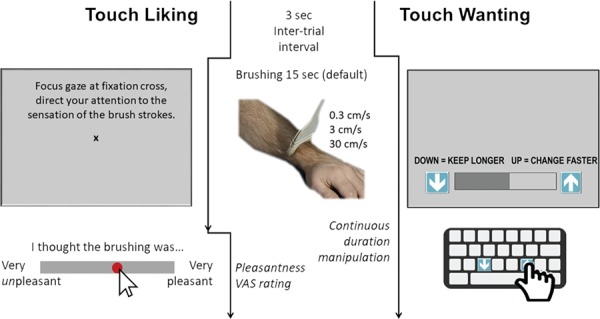Fig. 3.

Task designs. Touch liking and touch wanting was measured in two different tasks, separated by a minimum interval of 15 min. Stimuli (brushing strokes of 0.3, 3 and 30 cm/s administered over ~15 cm of the left forearm) and inter-trial intervals were the same in both tasks. Touch liking consisted of 12 trials of 15 s continuous brushing. Participants were instructed to focus on the brushing sensation while resting their gaze at a fixation cross. After each brushing trial, participants rated touch pleasantness by clicking on a VAS scale shown on screen. A 3 s interval followed before the next trial. Touch wanting consisted of brushing trials whose durations could be manipulated by the participant using two buttons—either extending (keep button) or shortening (change button) the duration of each trial. Instructions were displayed on the screen, together with a meter indicating how long was left of the trial. The meter also served as visual feedback on how much they were manipulating the duration. When participants pressed the keep/change buttons on the computer keyboard, the meter would move slower/be brought to a halt/move faster depending on button press activity.
